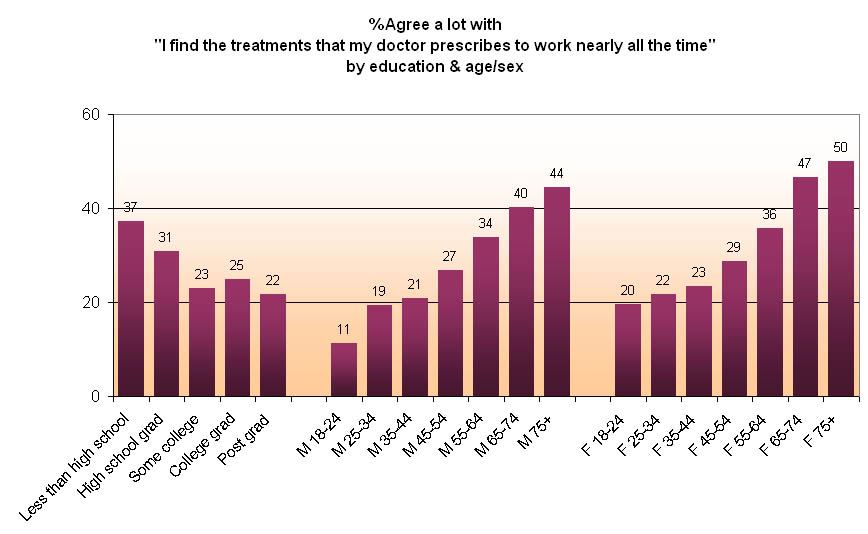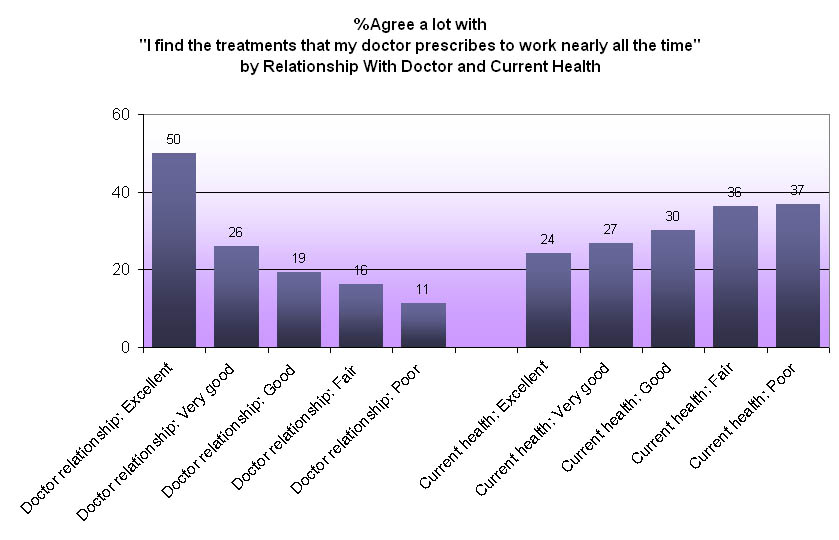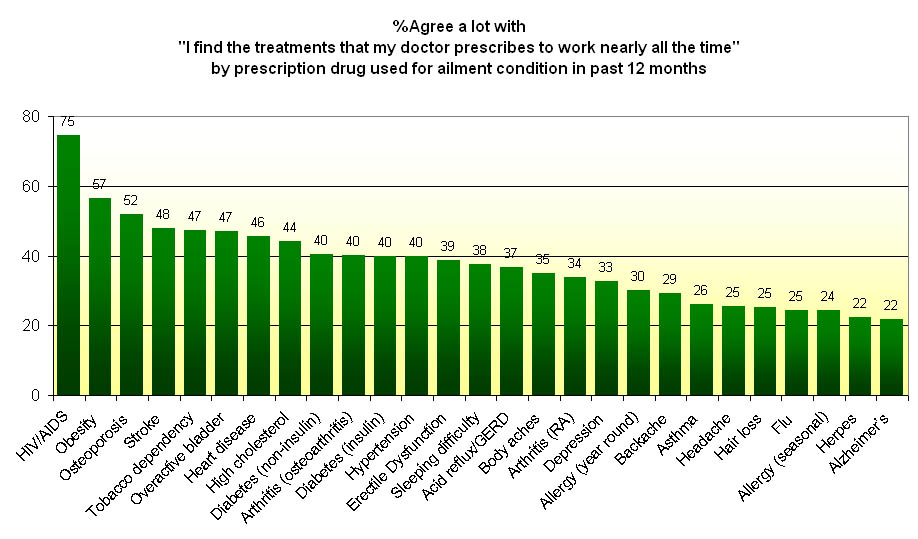
Patient Expectations On The Effectiveness of Pharmaceutical Drugs
At first blush, this seems an extraordinary subject. When a doctor prescribes a pharmaceutical drug to a patient for some ailment condition, it must be surely be expected to work. Or does it? Here is a report from The Independent:
A senior executive with Britain's biggest drugs company has admitted that most prescription medicines do not work on most people who take them. Allen Roses, worldwide vice-president of genetics at GlaxoSmithKline (GSK), said fewer than half of the patients prescribed some of the most expensive drugs actually derived any benefit from them. Dr Roses, an academic geneticist from Duke University in North Carolina, spoke at a recent scientific meeting in London where he cited figures on how well different classes of drugs work in real patients.
Drugs for Alzheimer's disease work in fewer than one in three patients, whereas those for cancer are only effective in a quarter of patients. Drugs for migraines, for osteoporosis, and arthritis work in about half the patients, Dr Roses said. Most drugs work in fewer than one in two patients mainly because the recipients carry genes that interfere in some way with the medicine, he said. "The vast majority of drugs - more than 90 per cent - only work in 30 or 50 per cent of the people," Dr Roses said. "I wouldn't say that most drugs don't work. I would say that most drugs work in 30 to 50 per cent of people. Drugs out there on the market work, but they don't work in everybody."
Some industry analysts said Dr Roses's comments were reminiscent of the 1991 gaffe by Gerald Ratner, the jewellery boss, who famously said that his high street shops are successful because they sold "total crap". But others believe Dr Roses deserves credit for being honest about a little-publicised fact known to the drugs industry for many years.
What do the patients think? We will now look at some survey data from the 2003 MARS OTC/DTC Pharmaceutical Study. This is a mail survey of 21,106 adults in the United States conducted during the first quarter of 2003. Within the survey, the respondents are shown the statement: "I find the treatments that my doctor prescribes to work nearly all the time." Overall, 27.7% of the survey respondents said that they 'agree a lot' with the statement, and another 35.2% said they 'agree a little' with the statement. Somehow, about one-third of the people still do not believe that medical treatments work all the time.
In the next chart, we show the agree rates by educational level and age/sex groups. By education, it would seem that the better educated people are, the less likely that they believe in the effectiveness of treatments. Somewhere along the way through the ivy walls of academia, whether or not in a medical-related field, one may pick up ideas about the practice of medicine. By gender, women are more likely to agree than men for every single age group. By age, the agree rate is monotonically increasing.

The pattern for the age/sex groups suggests that this is not the appropriate data towards understanding the nature of the agree rates. As the cited article in The Independent suggests, the clinical data suggest that the effectiveness rates can be quite different by the types of disease. Since people from different age/sex groups experience different types of diseases, we should really be looking at the healthcare situation for people. In the next chart, we show a couple of things. First, we show the agree rates by the assessment of the doctor-patient relationship. It would seem that one would have a good relationship with a doctor whose treatments work nearly all the time and vice versa. Indeed this is the case here. Secondly, we show the agree rates by the current health condition. It would seem that someone is in chronically ill health may have difficulty finding any treatment that will work, notwithstanding the best efforts of the doctor in charge.

In the following chart, we show the agree rates by people who have used prescription drugs from doctors to treatment specific ailment conditions during the preceding 12 months. We have sorted the list according to the agree rates from high to low, bearing in mind that the agree rate in the total sample is 27.7%. On the left hand side, we have conditions that are either highly visible or intolerably painful such as HIV/AIDS, obesity, osteoporosis, stroke, tobacco dependency, overactive bladder and heart disease. Whether or not a prescription is working should be quite apparent to the patient. And if this prescription drug is not working, then perhaps the doctor ought to be trying something else. On the right hand side, we have conditions for which there are no known totally effective cures (e.g. Alzheimer's disease, herpes, hair loss). Conditions such as flu, headache and seasonal allergy may be treated with non-prescription medicine and they are supposed to be non-chronic conditions that should subside on their own anyway.

(posted by Roland Soong, 12/10/2003)
(Return to Zona Latina's Home Page)